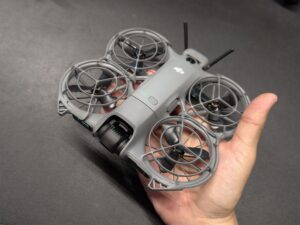Brought to you by Keysight Technologies
By Hwee Yng Yeo
As the world anticipates the arrival of applicable 6G innovations, researchers face numerous challenges in validating this next-generation wireless communication technology. The journey from theoretical concepts and mathematical equations to real-world 6G implementation is complex and requires meticulous planning, testing, and measurements to better characterise these ultra-high frequencies.
Not only must 6G research help uncover specific channel behaviours ─ it must also validate how these new frequencies, waveforms, and other capabilities will perform from the physical layer up to the higher-layer protocols.
Challenges that researchers must resolve, are at channel and network levels.
Channel-level challenges
At the channel level, high-frequency signal propagation issues include path loss, as sub-terahertz and terahertz (THz) bands are prone to significant signal attenuation, losing signal strength over long distances. They also encounter penetration loss where high-frequency signals fade upon encountering obstacles like buildings and foliage, leading to coverage issues.
Atmospheric absorption is also an issue. THz signals are particularly susceptible to absorption by atmospheric gases, reducing signal strength and reliability.
And then there are link budget challenges. The broad bandwidth of 6G signals can lead to low signal-to-noise ratios, as energy is spread over a wider frequency range.
Multipath propagation issues include interference and fading. Signals reflecting off surfaces and arriving at the receiver at different times cause interference and signal distortion. This is exacerbated in urban environments. In fading, rapid fluctuations in signal amplitude due to multipath effects lead to inconsistent signal quality and reduced communication reliability.
In the area of beamforming and beam management, precise beamforming techniques are required to direct high-frequency narrow beams towards the receiver, and beam alignment can be challenging in dynamic environments. Beam tracking presents another challenge, as continuous tracking of the receiver’s location is needed to adjust the beam direction in real- time, adding complexity to the system.

Network-level challenges
Network-level challenges include issues around network density and interference, latency and reliability, and integration with heterogeneous networks.
At the network level, performance depends on how to mitigate issues caused by network density and inter-cell interference, and spectrum management. Dense networks with numerous small cells may increase inter-cell interference, degrading overall network performance. And efficient spectrum management is crucial to minimise interference and maximise the use of available frequencies.
Latency and reliability are also key parameters for achieving ultra-low latency targets (e.g., one-microsecond latency), which require highly efficient signal processing and transmission techniques. There is also a need to ensure reliable 6G communication in diverse environments, including urban, rural, and remote areas.
Integration of 6G networks with existing 5G and other wireless technologies requires seamless handover between various network types, and interoperability issues will need to be addressed. Ensuring interoperability between various network components and technologies, such as satellite, terrestrial, and aerial networks, is critical for achieving comprehensive coverage and performance goals.
From 6G theory to simulation, and emulation
Researchers are modelling various 6G use cases covering channel propagation, waveforms, and networks with design simulation software tools.
The next step in the 6G development process is to take these simulations into real-world signal emulation. Emulation is crucial for testing the performance of 6G systems in real-time channels and networks, from the physical layer to higher layer protocols.
Emulating 6G signals in a controlled lab environment enables researchers to accurately assess the performance of 6G systems. This includes evaluating the challenges cited, under repeatable conditions to fine-tune program iterations against varying scenarios. Researchers can also study system vulnerabilities by emulating cybersecurity issues and addressing them early on.
6G: From innovative research to reality
The industry expects 6G commercialisation to happen by 2030 – leaving at best five years to bring to fruition both products and applications which must meet conformance standards that are still in various stages of formulation. Researchers, device and component designers, test and measurement specialists, network and cybersecurity engineers, and regulatory authorities are collaborating across the 6G ecosystem to bring 6G to life.

Keysight had the opportunity to visit the 6G research labs at Northeastern University, where the researchers shared their exciting projects. These covered:
- Studying a 130GHz broadband MIMO system to increase data throughput and transmission distance. The MIMO system uses two data streams with 10GHz of bandwidth at 130GHz to achieve a 36Gbps over-the-air transmission.
- Emulating a person-in-the-middle attack scenario to eavesdrop on a highly directional sub-THz communication link. The person-in-the-middle attack scenario uses a meta-surface to bend a highly directional sub-THz beam towards an eavesdropper receiver while maintaining the line-of-sight link.
- Researching real-time sub-THz for network applications. The real-time sub-THz test bed uses an FPGA prototyping system with high-speed digital-to-analog converters (DACs) and analog-to-digital converters (ADCs), capable of supporting 8-10GHz of contiguous bandwidth at sub-THz frequencies to get up to 60Gbps.

Hwee Yng Yeo is industry and solutions manager at Keysight Technologies. She graduated from the National University of Singapore with an Honours degree in botany, with special interest in ecology. In her free time, Hwee Yng works with non-government organisations in the Philippines to support low-cost off-grid electrification and livelihood technical training programmes.






